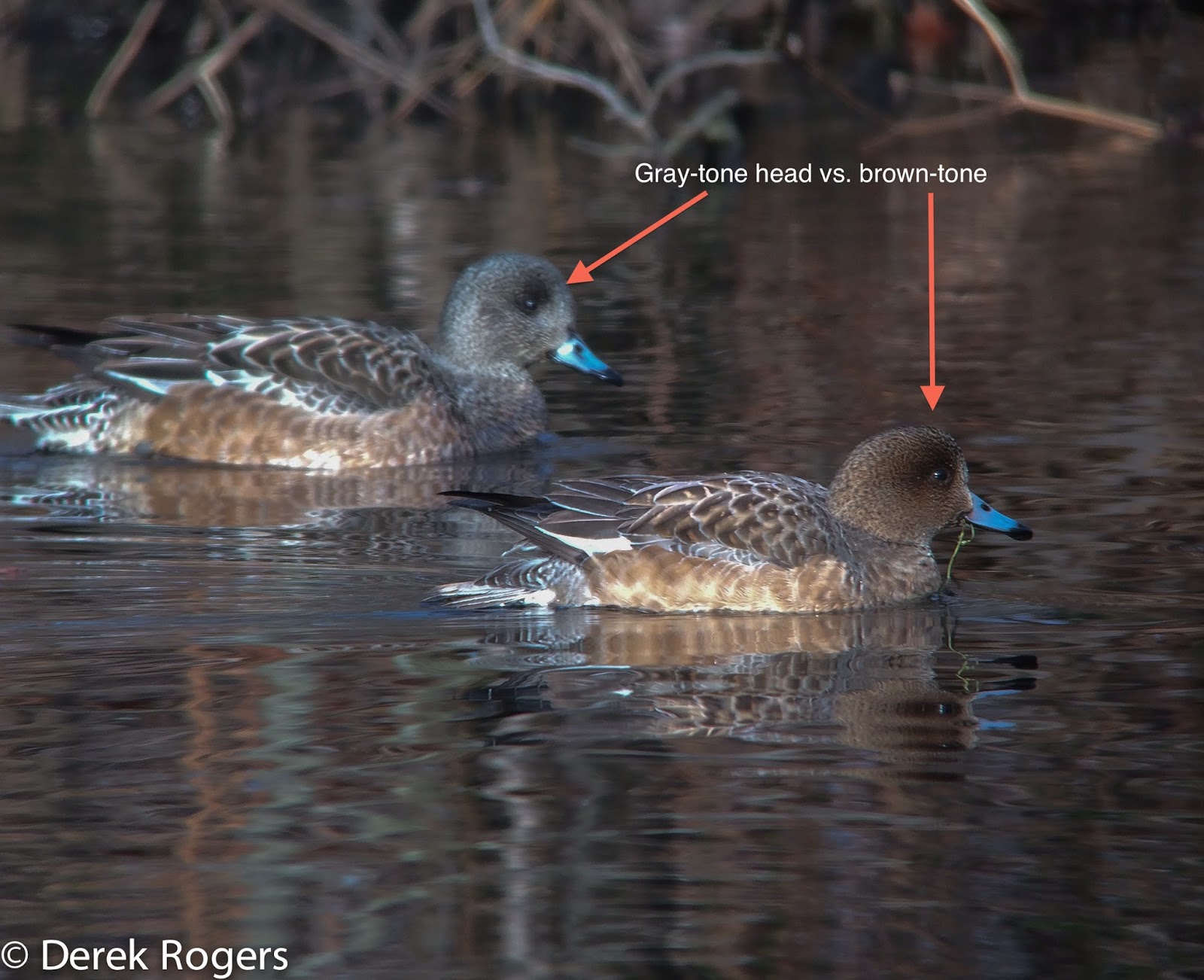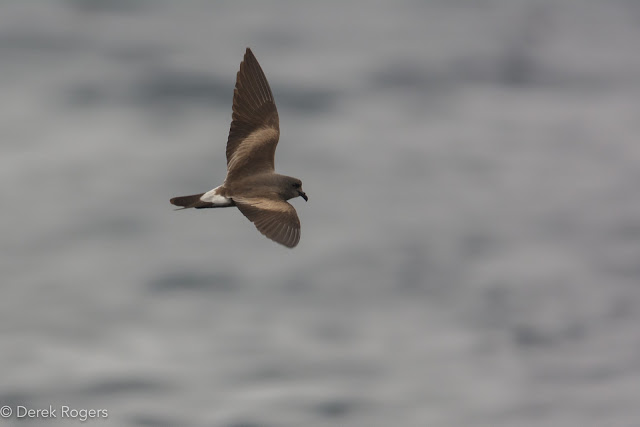Top 3 Summer Highlights - 2013
1) White-faced Storm-Petrel, Block Canyon, August 20, 2013:
It was August 19th when I received an email from John Shemilt that he was looking for a 3rd individual to join his team, on August 20th, to hunt for the much sought after Big-Eye Tuna in the Hampton Offshore Invitational fishing tournament out of Shinnecock Inlet. How could I resist? I scrambled around a bit, made sure things were squared away at work and decided to jump in on this last minute invite to try and catch a tournament winning fish. John had caught a nice Big-eye not long ago and was hoping to repeat during tournament week. I should mention that John and Keegan are both expert pelagic birders, so for obvious reasons I enjoy spending time with them. Fishing while birding, or birding while fishing? I'm pretty sure it doesn't get any better than that. I have to say, August 20th was a very slow day offshore, both for birds and fish, but that's just how it goes sometimes.
 |
| White-faced Storm-Petrel |
We blasted off out of Shinnecock at roughly 5:15 AM (Can't quite remember but there was an official start time to the tournament). All of the tournament boats were lined up, inside of the bay, just waiting for the clock to tick. We first set off to Rhode Island waters where we trolled around for the morning, searching for life and hoping to attract some fish with the spreader rigs. Unfortunately, all of the fish we marked were some 300-400 feet beneath us. Reports of fish, and some other marine life, were being reported at "The Tails" or "Fish Tails." This is the north end of Block Canyon, shaped like a fish tail of course, and is a popular fishing location (roughly 90-100 miles south of Shinnecock Inlet). We ripped over to The Tails, reset the spreader bars and headed into the canyon. We picked up on a moderate-sized pod of Rizzo's Dolphins and Keegan asked John to follow behind them. Bam! We had a Big-eye on, and it was a really big fish. Keegan manned the rod while he and John communicated back and forth, strategizing as they fought this monster of the sea. After nearly 2-hours of fighting, we lost the fish. All that returned to the surface was a bent, nearly straightened hook. Only a really big fish has the capability to bend out a hook and John and Keegan would not have been surprised if that fish weighed near or above 300 pounds. Needless to say, we were devastated, shocked, speechless.
 |
| White-faced Storm-Petrel |
We mustered up the will to reset the spreader bars once more and give it another shot. Our final attempt was fruitless so we packed up and started gunning back for Shinnecock Inlet. We were going nearly 30 knots, probably 10-15 minutes north of The Tails, when John suddenly yells, "WHITE-FACED STORM-PETREL"!!!!!! John and Angus Wilson had several White-faced Stormies on a recent, previous trip and this life bird was on my brain the entire time we were offshore. This was a memorable moment and probably one of the most unique birds that I have ever seen. This small, paddle-winged, master of the ocean surface put on an absolute show for us. We circled the bird 3-4 times and watched as it picked food from the ocean surface, darted behind swells, "surfing" waves and disappearing, almost as if it dove under water. To think how lucky we were to see this bird is also beyond me. They are difficult to spot to begin with and if this bird wasn't 10 feet off the starboard side, while we were blasting north at 30 knots, we never would have seen it. This goes down as one of my most memorable experiences and I feel very fortunate to have seen this.
2. Chuck-Will's-Widow, Fire Island, June 22, 2013:
Tyvek suits, duct tape, deer ticks and poison ivy is what it took to see a Chuck-Will's-Widow and its chicks out in the middle of the dense coastal forests of Fire Island, New York. This sounds challenging but its not far off from the fairly routine hazards of my daily work at the Nature Conservancy. It's not fun when its 90 degrees out but it was well worth the battle on June 22nd. I was assisting friend and colleague Jordan Rafael with some vegetation monitoring on this particular day, knowing darn well from his expertise that Chuck-Will's can and have nested in the nearby vicinity. For some odd reason, Chuck-Will's Widow can be seen and heard in various locations throughout Fire Island National Seashore but are scarce elsewhere on Long Island. I took a previous trip to Watch Hill on June 19th and heard 7 birds calling, all from the boat basin alone! This really opened my eyes to the potential density of this species across the seashore.
We made our way through the dense woods to each veg plot while carefully surveying the ground for chicks and even "nests." Chuck-Will's don't actually construct nests. They simply lay their eggs on open ground and rely on their amazing camouflage to hide and secure the eggs while incubating. According to some excerpts from Arthur Cleveland Bent's Life Histories of Birds, Chuck-Will's Widows will sometimes drop their eggs within 3-5 feet, sometimes the same spot, of the exact location that they nested in the previous year. Amazing.
After about an hour of trekking, we flushed an adult Chuck-Will's Widow. The bird weaved and soared through the dense forest with ease, making various croaking noises and calls and eventually perched up on a dead Shadblow snag. I had clear, unobstructed views and began firing away with my iPhone/Meopta set up. Jordan quickly spotted 2 chicks on the ground in the approximate area from which the adult had flushed. We would discover a third chick hidden underneath a nearby dead pitch pine. We did not linger very long as the adult was obviously concerned with our presence. The few minutes that we spent observing this family group would go down as one of the top highlights since I've been birding.
3. Henslow's Sparrow, Fort Drum, 6/29/13:
It was very difficult to pick a my 3rd and final favorite highlight of the Summer, and I'm still a bit undecided. I suppose if I picked a top 5 I'd have to include Long-tailed Jaeger and Hudsonian Godwit but in no particular order as I have fond memories of each one. I've always had an interest in the Ammodramus genus and Henslow's Sparrow (Ammodramus henslowii) has been one of my most sought NY birds.
I planned a western slope birding mission in late June this past Summer. My friend Eugene Davenport Nichols has a place on Long Point, right along the shores of Chaumont Bay on Lake Ontario. Eugene is a master naturalist and botanist and is also one heck of a fisherman. We planned both of the above during my visit with a few target birds in mind; Henslow's Sparrow, Sedge Wren and Black Tern (on their breeding grounds). He'd help me land my life Walleye up in Alexandria Bay on this trip. Eugene is also friends with Jeff Bolsinger, who has the birding scene of St. Lawrence County on lock and agreed to spend a morning with me at their place of employment, Fort Drum.
Jeff led us to to various locations within the complex but wasted no time in taking us to Henslow's Sparrow territory. Henslow's Sparrow is a grassland bird that prefers wet, grassy meadows with very limited trees and shrubs. Their population has been steadily declining through the years and there are now very few places to find them in New York State. This species is notoriously difficult to detect as they are very secretive, usually running through the dense grassland to avoid detection rather than retreating in flight. Luckily, their call notes do carry and a trained ear can usually pick them up from a considerable distance, as was the case when we finally located a bird after hours of searching. We tried several locations and almost lost hope when Jeff decided, as a last resort, to try the "trolling method" where we would drive slowly along the grassland road and just listen. Sure enough a Henslow's called and we all simultaneously froze as if a bomb had dropped (not an uncommon occurrence at Drum apparently). We had great scope views of the bird and I managed some distant, record iScope shots for the memory. Another Ammodramus down and only two to go (Baird's and Le Conte's) but this was a good one and I was happy to score in my home State. Below is a short video clip of the Henslow's. You can watch as the bird lifts its head and belts out its short song, which is often described as a high pitched, insect-like "tsillik." Can you pick out the song among the many other singing grassland birds in this video?
 |
| Chuck-Will's Widow - iScoped with Meostar S2 Spotting Scope and Meopix Adapter |
 |
| Chuck-Will's Widow - iScoped with Meostar S2 Spotting Scope and Meopix Adapter |
After about an hour of trekking, we flushed an adult Chuck-Will's Widow. The bird weaved and soared through the dense forest with ease, making various croaking noises and calls and eventually perched up on a dead Shadblow snag. I had clear, unobstructed views and began firing away with my iPhone/Meopta set up. Jordan quickly spotted 2 chicks on the ground in the approximate area from which the adult had flushed. We would discover a third chick hidden underneath a nearby dead pitch pine. We did not linger very long as the adult was obviously concerned with our presence. The few minutes that we spent observing this family group would go down as one of the top highlights since I've been birding.
3. Henslow's Sparrow, Fort Drum, 6/29/13:
 |
| Henslow's Sparrow - Distant iScope image captured with my iPhone and Meopix Adapter through a Meostar S2 Spotter |
I planned a western slope birding mission in late June this past Summer. My friend Eugene Davenport Nichols has a place on Long Point, right along the shores of Chaumont Bay on Lake Ontario. Eugene is a master naturalist and botanist and is also one heck of a fisherman. We planned both of the above during my visit with a few target birds in mind; Henslow's Sparrow, Sedge Wren and Black Tern (on their breeding grounds). He'd help me land my life Walleye up in Alexandria Bay on this trip. Eugene is also friends with Jeff Bolsinger, who has the birding scene of St. Lawrence County on lock and agreed to spend a morning with me at their place of employment, Fort Drum.
 |
| Henslow's Sparrow - Distant iScope image captured with my iPhone and Meopix Adapter through a Meostar S2 Spotter |



Comments
Post a Comment